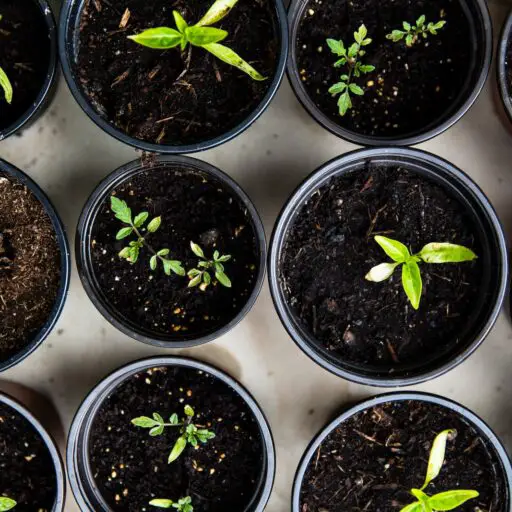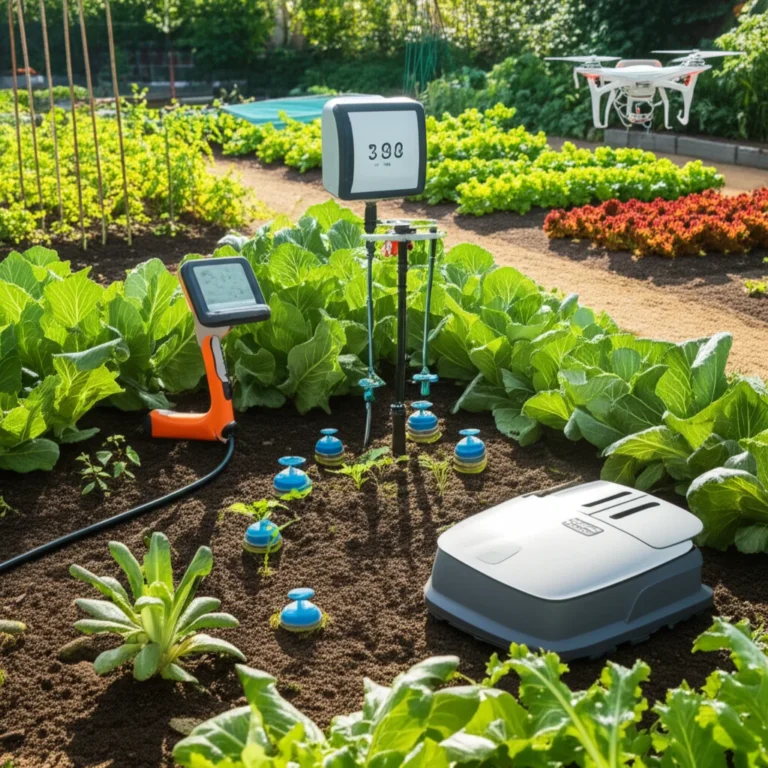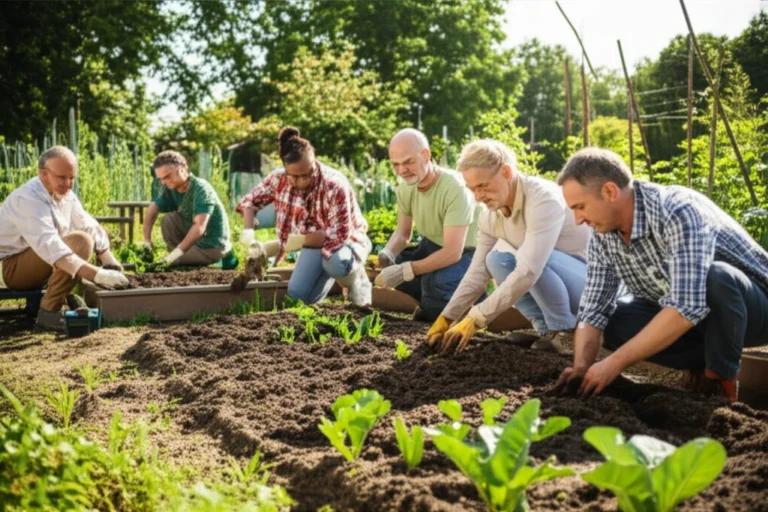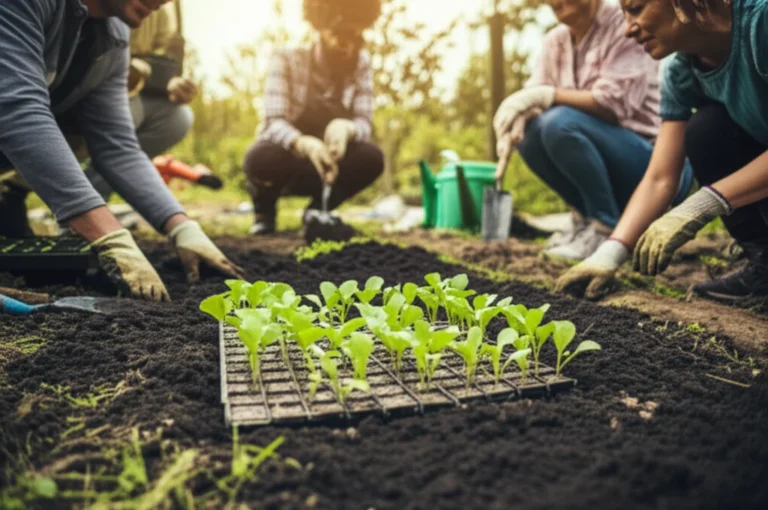Support our educational content for free when you purchase through links on our site. Learn more
Imagine this: a vacant lot in your neighborhood transforms into a lush, buzzing community garden filled with fresh veggies, vibrant flowers, and smiling neighbors. But before you can harvest that first ripe tomato, you need one crucial ingredient—funding and resources. Securing these can feel like trying to grow a garden in rocky soil, but with the right strategies, you’ll cultivate a thriving green space that nourishes your community for years to come.
In this comprehensive guide, we’ll walk you through 10 proven ways to secure grants, sponsorships, donations, and in-kind resources for your community garden startup. From writing winning grant proposals to creative fundraising ideas and building powerful partnerships, we’ve got you covered. Plus, we’ll share inspiring success stories and insider tips from the gardeners at Community Gardening™ to help you grow your dream garden with confidence. Ready to dig in and discover how to turn your vision into a flourishing reality? Let’s get growing!
Key Takeaways
- Diversify your funding sources by combining grants, sponsorships, donations, membership fees, and crowdfunding to build a resilient financial foundation.
- Craft compelling grant proposals that clearly outline your garden’s mission, community impact, and detailed budget to win over funders.
- Leverage local partnerships with businesses, nonprofits, and government agencies for resources, expertise, and in-kind donations.
- Engage your community through social media storytelling, events, and volunteer programs to boost support and sustainability.
- Plan for long-term success by tracking impact, maintaining transparent records, and developing ongoing fundraising strategies.
CHECK PRICE on essential garden supplies:
- Fiskars Garden Tools: Amazon | Walmart
- Greenes Fence Raised Beds: Amazon | Greenes Fence Official Website
- Envirocycle Compost Bins: Amazon
- Rain Bird Irrigation Kits: Amazon | Rain Bird Official Website
Ready to unlock the secrets of community garden funding? Keep reading and let’s grow together! 🌿
Table of Contents
- ⚡️ Quick Tips and Facts for Securing Community Garden Funding
- 🌱 The Roots of Community Garden Funding: History and Evolution
- 💡 Understanding the Funding Landscape: Grants, Sponsorships, and Donations
- 1️⃣ How to Write a Winning Community Garden Grant Proposal
- 2️⃣ Top 10 Funding Sources and Organizations for Community Gardens
- 3️⃣ Creative Fundraising Ideas That Actually Work for Garden Startups
- 🌿 Building Partnerships: Collaborating with Local Businesses and Nonprofits
- 🌻 Resource Acquisition: Tools, Seeds, and Volunteer Support
- 📋 Navigating Legal and Zoning Requirements for Community Gardens
- 🌍 Leveraging Social Media and Community Engagement to Boost Support
- 🛠️ Essential Equipment and Supplies: Where to Get Them for Less
- 🌟 Success Stories: How Other Community Gardens Secured Their Funding
- 📈 Measuring Impact: Reporting and Accountability to Keep Funds Flowing
- 🔄 Sustaining Your Garden: Long-Term Funding and Resource Strategies
- 📚 Helpful Resources and Tools for Community Garden Startups
- 📞 Contacts and Networks: Who to Reach Out to for Support
- 🌐 Stay Connected: Social Channels and Community Groups
- ✅ Conclusion: Growing Your Community Garden Dream with Confidence
- 🔗 Recommended Links for Community Garden Funding
- ❓ FAQ: Your Burning Questions About Community Garden Funding Answered
- 📖 Reference Links and Further Reading
⚡️ Quick Tips and Facts for Securing Community Garden Funding
Starting a community garden is like planting a seed that grows into a vibrant hub of green thumbs, fresh veggies, and neighborly smiles. But before you can harvest those juicy tomatoes, you’ll need to secure funding and resources — the lifeblood of any garden startup. Here are some quick tips and facts to get you sprouting in the right direction:
- Start with a clear mission and plan: Funders love a garden with purpose. Are you growing for food security, education, or community bonding?
- Explore multiple funding streams: Grants, donations, sponsorships, membership fees, and crowdfunding all play a part.
- Leverage local resources: Municipal programs, local businesses, and nonprofits often have support programs or in-kind donations.
- Volunteer power is gold: Labor costs can be slashed with community volunteers who also become lifelong garden advocates.
- Keep detailed records: Funders want accountability — track your expenses, volunteer hours, and garden impact.
- Tell your story: Share your garden’s journey through social media, newsletters, and local press to attract ongoing support.
For a deep dive on how to start a community garden and secure resources, check out our detailed guide on How do I start a small community garden?.
🌱 The Roots of Community Garden Funding: History and Evolution
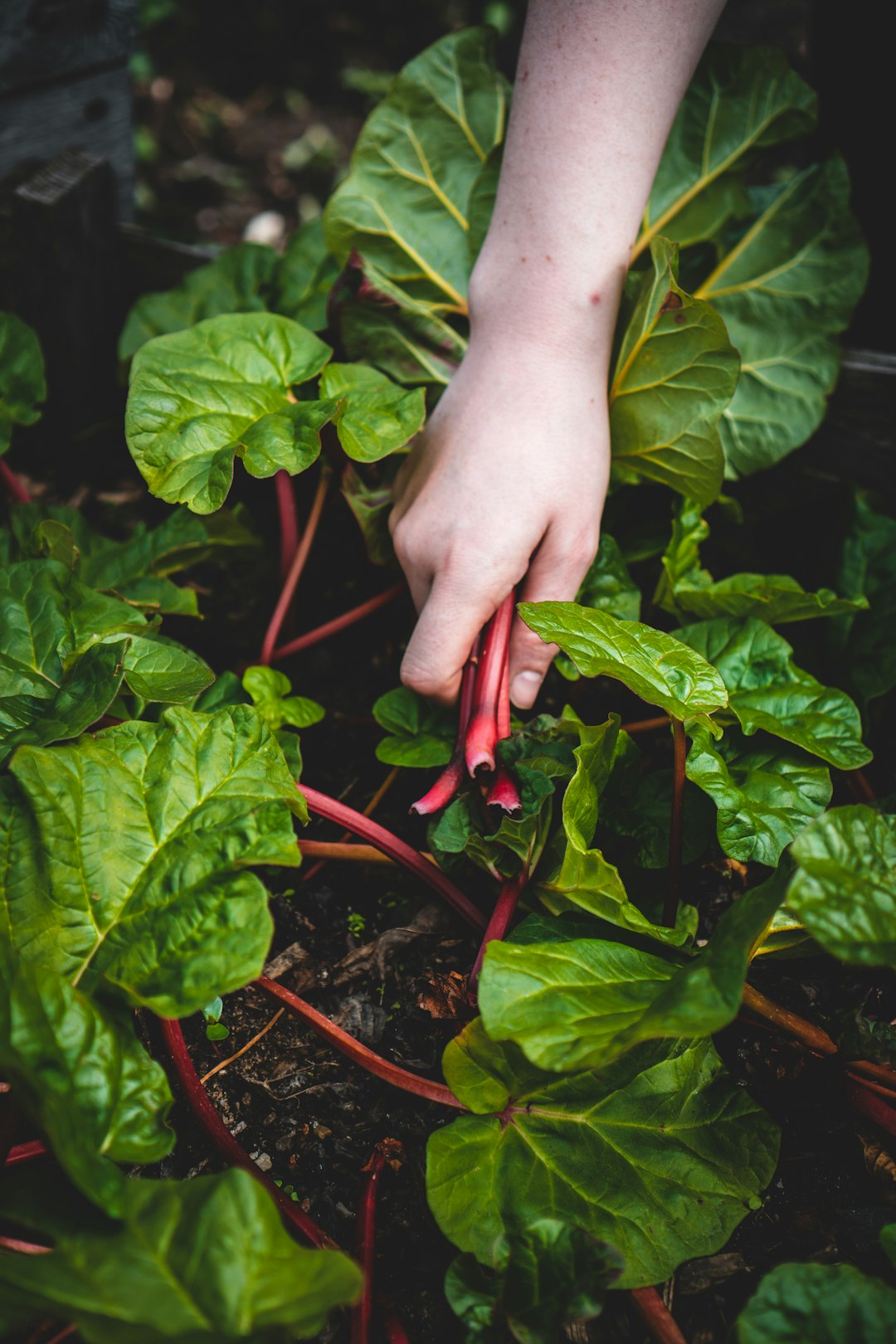
Community gardens have been sprouting up since the early 20th century, initially as Victory Gardens during wartime to boost food production. Over time, they evolved into spaces for urban renewal, social justice, and environmental sustainability. Understanding this history helps us appreciate the funding models that have supported gardens through the decades.
From Victory Gardens to Modern Funding Models
- Early 1900s: Government-backed Victory Gardens encouraged citizens to grow food during WWI and WWII. Funding was often public and community-driven.
- 1970s-80s: Urban decay sparked grassroots community gardens, often funded by local nonprofits and grassroots fundraising.
- Today: Funding is a blend of public grants, private sponsorships, crowdfunding, and in-kind donations. Programs like the American Community Gardening Association (ACGA) provide resources and grant listings.
This evolution shows that diversified funding is key to garden longevity. For more on community garden benefits and history, visit our Benefits of Community Gardens page.
💡 Understanding the Funding Landscape: Grants, Sponsorships, and Donations
Before you dive into applications and pitches, let’s map out the funding landscape for community gardens. Knowing your options helps you tailor your approach and maximize success.
Types of Funding Sources
| Funding Type | Description | Pros | Cons |
|---|---|---|---|
| Grants | Funds from government, foundations, nonprofits | Often substantial; adds credibility | Competitive; requires detailed proposals |
| Sponsorships | Support from local businesses or corporations | Builds community ties; in-kind support | May require branding or advertising |
| Donations | Individual or group contributions | Flexible; builds grassroots support | Can be unpredictable and small amounts |
| Membership Fees | Fees charged to gardeners | Steady income; encourages commitment | May exclude low-income participants |
| Crowdfunding | Online campaigns (e.g., Kickstarter) | Engages wider community; marketing boost | Time-consuming; fees apply |
Pro Tips from Community Gardening™
- Start small with local grants: Many cities have small grants for community projects.
- Build relationships with local businesses: They often want to support green initiatives.
- Use crowdfunding to tell your story: Platforms like GoFundMe or SeedMoney are garden-friendly.
For a comprehensive list of grants and funding programs, keep reading to our next section!
1️⃣ How to Write a Winning Community Garden Grant Proposal
Grant writing can feel like decoding a secret garden map, but with the right steps, you’ll unlock funding treasures. Here’s how to craft a proposal that funders can’t resist.
Step-by-Step Grant Writing Guide
- Research thoroughly: Identify grants aligned with your garden’s mission. Use databases like Grants.gov or the ACGA resources.
- Understand the funder’s priorities: Tailor your proposal to their goals—food security, education, urban renewal, etc.
- Develop a clear project plan: Include objectives, timeline, budget, and expected outcomes.
- Show community impact: Highlight how your garden benefits neighbors, especially underserved groups.
- Include a detailed budget: Be transparent about costs and how funds will be used.
- Provide letters of support: From local officials, community leaders, or partner organizations.
- Proofread and follow guidelines: Stick to word limits and formatting rules.
Common Pitfalls to Avoid
- Vague goals or no measurable outcomes
- Overly optimistic budgets without justification
- Ignoring funder’s application instructions
We recommend checking out resources like the North Carolina Community Food Gardening Handbook for sample proposals and tips.
2️⃣ Top 10 Funding Sources and Organizations for Community Gardens
Ready to dig into the best funding sources? Here’s our curated list of top organizations and programs that have helped gardens flourish nationwide.
| Organization / Program | Type | What They Offer | Website / Application Link |
|---|---|---|---|
| SeedMoney | Grant + Crowdfunding | Small grants + crowdfunding platform | seedmoney.org/apply |
| American Community Gardening Association (ACGA) | Resources + Grants | Grants, resources, networking | communitygarden.org |
| Local Municipal Grants | Government Grants | Varies by city; often small start-up grants | Check your city’s parks or urban agriculture dept. |
| National Gardening Association | Grants | Youth garden grants, community projects | garden.org |
| Whole Foods Market Community Giving | Corporate Sponsorship | Local community garden sponsorships | wholefoodsmarket.com |
| Slow Food USA | Grants + Support | Food justice and community garden grants | slowfoodusa.org |
| Local Rotary Clubs | Donations + Volunteers | Financial and volunteer support | Contact local Rotary chapter |
| Crowdfunding Platforms | Crowdfunding | GoFundMe, Kickstarter, Indiegogo | Varies |
| The Home Depot Foundation | Grants + Tools | Community garden grants and tool donations | homedepotfoundation.org |
| National Wildlife Federation | Grants | Garden grants focused on wildlife habitat | nwf.org |
Insider Tip
Many cities, like Columbus, Ohio, offer Land Bank Community Garden Programs providing land access, water systems, and small grants. Reach out to your local government for similar programs.
3️⃣ Creative Fundraising Ideas That Actually Work for Garden Startups
Fundraising doesn’t have to be a snooze fest! Here are some fun and effective ideas that Community Gardening™ has seen bloom beautifully.
Fundraising Ideas to Try
- Garden-themed potluck dinners: Invite neighbors to share food and stories, and ask for donations.
- Seed and plant sales: Grow seedlings and sell them in spring.
- Workshops and classes: Teach gardening skills for a fee.
- Silent auctions: Auction donated garden tools or local art.
- Car washes or bake sales: Classic community fundraisers with a green twist.
- Crowdfunding campaigns: Use videos and photos to tell your garden’s story online.
- Sponsor-a-plot program: Local businesses sponsor individual garden plots.
Real Story from Our Garden
One of our gardens raised over $2,000 in a weekend by hosting a “Garden Gala” — a casual outdoor event with live music, garden tours, and a raffle. It was a hit and brought in new volunteers too!
🌿 Building Partnerships: Collaborating with Local Businesses and Nonprofits
Partnerships are the fertilizer that helps your garden grow strong and sustainable. Here’s how to cultivate fruitful collaborations.
Why Partner?
- Access to funding, tools, and expertise
- Increased visibility and community support
- Shared resources reduce costs
How to Find Partners
- Reach out to local nurseries, hardware stores, and organic farms
- Connect with nonprofits focused on food security, youth education, or environmental causes
- Approach schools and universities for educational partnerships
- Engage local government departments (parks, urban agriculture)
Crafting a Win-Win Proposal
- Highlight mutual benefits: community impact, marketing exposure, volunteer opportunities
- Offer recognition: signage, social media shoutouts, event sponsorships
- Be clear about expectations and responsibilities
🌻 Resource Acquisition: Tools, Seeds, and Volunteer Support
Funding is crucial, but so are the physical resources and human power that keep your garden thriving.
Where to Source Tools and Supplies
| Resource Type | Where to Find | Tips |
|---|---|---|
| Tools | Local hardware stores, tool libraries, donations from Home Depot Foundation | Ask for in-kind donations or discounts |
| Seeds | Seed banks like Seed Savers Exchange, local seed swaps, Baker Creek Heirloom Seeds | Choose varieties suited to your climate and soil |
| Soil and Compost | Municipal compost programs, local farms, tree companies for mulch | Check city programs like Columbus’ Com-til compost |
| Water Systems | City grants, rainwater harvesting setups, donated cisterns | Efficient watering saves money and resources |
Volunteer Recruitment Tips
- Use social media and community bulletin boards
- Partner with schools and youth groups
- Host volunteer appreciation events to keep morale high
📋 Navigating Legal and Zoning Requirements for Community Gardens
Before you break ground, make sure your garden complies with local laws — a step often overlooked but essential.
Key Legal Considerations
- Land use permissions: Lease or license agreements if on public or private land
- Zoning laws: Check if urban agriculture is allowed in your area
- Liability waivers: Protect your garden group from legal claims
- Water use permits: Some municipalities regulate water usage for gardens
- Fencing and signage regulations: Follow local ordinances for safety and aesthetics
How to Get Started
- Contact your city’s planning or parks department
- Consult resources like the City of Columbus Garden Policy Fact Sheet
- Consider legal advice or pro bono support from local law clinics
🌍 Leveraging Social Media and Community Engagement to Boost Support
Your garden’s story is your strongest asset. Sharing it widely can attract funding, volunteers, and goodwill.
Best Practices for Social Media
- Post regular updates with photos and videos of garden progress
- Highlight volunteer stories and community events
- Use hashtags like #CommunityGarden, #GrowTogether, and #UrbanFarming
- Engage followers with polls, Q&A, and contests
Offline Engagement
- Host open garden days and workshops
- Collaborate with local media for coverage
- Create newsletters to keep supporters informed
🛠️ Essential Equipment and Supplies: Where to Get Them for Less
Stretching your budget means finding quality supplies without breaking the bank.
Recommended Brands and Sources
| Item | Brand/Source | Notes |
|---|---|---|
| Garden Tools | Fiskars, Corona, True Temper | Durable and widely available on Amazon |
| Raised Beds | Greenes Fence, VegTrug | Easy to assemble and long-lasting |
| Compost Bins | Envirocycle, FCMP Outdoor | Efficient and odor-free options |
| Irrigation | Rain Bird, Orbit | Water-saving drip irrigation kits |
Where to Buy Discounted or Donated Supplies
- Local Habitat for Humanity ReStores
- Craigslist or Facebook Marketplace
- Tool libraries or community swap meets
- Donations from local businesses (ask for sponsorships!)
👉 CHECK PRICE on:
- Fiskars Garden Tools: Amazon | Walmart
- Greenes Fence Raised Beds: Amazon | Greenes Fence Official Website
🌟 Success Stories: How Other Community Gardens Secured Their Funding
Nothing inspires like real-life success! Here are a few stories from gardens that started small and grew big with smart funding strategies.
The Green Thumb Collective (Chicago, IL)
- Raised $5,000 through a mix of local grants and a Kickstarter campaign
- Partnered with a local hardware store for tool donations
- Hosted monthly workshops to generate membership fees and community interest
Sunny Side Garden (Columbus, OH)
- Leveraged the City Land Bank program for free land and water cisterns
- Secured a $1,000 startup grant for soil and mulch
- Engaged local schools for volunteer labor and educational programming
Lessons Learned
- Diversify funding sources to avoid reliance on one stream
- Build strong community partnerships early on
- Keep transparent records to maintain funder trust
📈 Measuring Impact: Reporting and Accountability to Keep Funds Flowing
Funders want to see their money grow — literally and figuratively! Measuring and reporting your garden’s impact is crucial for ongoing support.
What to Track
- Number of participants and volunteer hours
- Pounds of produce harvested and distributed
- Community events held and attendance
- Educational workshops conducted
- Environmental benefits (e.g., compost produced, water saved)
Reporting Tips
- Use simple spreadsheets or free tools like Google Sheets
- Include photos and testimonials for storytelling
- Share reports with funders, partners, and the community
🔄 Sustaining Your Garden: Long-Term Funding and Resource Strategies
Once your garden is growing, how do you keep it thriving year after year? Sustainability is the secret sauce.
Strategies for Long-Term Success
- Establish a garden support committee to manage fundraising and outreach
- Implement membership dues with scholarships for low-income gardeners
- Develop annual fundraising events to maintain steady income
- Cultivate ongoing partnerships with local businesses and nonprofits
- Explore earned income through plant sales, workshops, or CSA shares
Avoiding Common Pitfalls
- Don’t rely solely on grants — they can dry up
- Keep communication open with your community to maintain engagement
- Plan for equipment replacement and garden expansion costs
📚 Helpful Resources and Tools for Community Garden Startups
We’ve gathered some of the best tools and resources to help you navigate the funding and resource maze.
| Resource Name | Description | Link |
|---|---|---|
| SeedMoney | Grants and crowdfunding platform for gardens | seedmoney.org |
| American Community Gardening Association (ACGA) | Resources and networking for community gardens | communitygarden.org |
| Garden Planner Tool | Online garden design and planning tool | gardenplanner.seedmoney.org |
| Grants.gov | Comprehensive federal grant database | grants.gov |
| Local Cooperative Extension Offices | Local expertise and sometimes small grants | Search by state at nifa.usda.gov |
| Kickstarter & GoFundMe | Crowdfunding platforms | kickstarter.com |
📞 Contacts and Networks: Who to Reach Out to for Support
Building a network is as important as planting seeds. Here are some key contacts to get you started:
- Local Parks and Recreation Departments: Often manage community garden programs.
- City Urban Agriculture or Land Redevelopment Offices: For land access and permits.
- Local Nonprofits: Food banks, environmental groups, youth organizations.
- Garden Tool Libraries: For borrowing equipment.
- Master Gardener Programs: Volunteer experts who can advise and assist.
- Community Gardening™: Reach out to us for advice and support!
🌐 Stay Connected: Social Channels and Community Groups
Keep your finger on the pulse of community gardening by joining these online groups and social channels:
- Facebook Groups: “Community Gardens Network,” “Urban Gardening USA”
- Reddit: r/gardening, r/urbanfarming
- Twitter: Follow hashtags #CommunityGarden #GrowTogether
- Instagram: Follow @communitygardeningorg for inspiration and tips
- Community Gardening™ Website: Join our mailing list and events at community-gardening.org
Engaging in these communities can spark new ideas, partnerships, and funding opportunities!
With these insights and tools, you’re well on your way to securing the funding and resources your community garden startup needs to flourish. Ready to dig deeper? Let’s keep growing together! 🌿
Conclusion: Growing Your Community Garden Dream with Confidence 🌻

Starting a community garden is an exciting journey filled with growth, learning, and connection. Securing funding and resources might seem like navigating a dense forest at first, but with the right tools and strategies, you’ll blaze a trail to success. Remember these key takeaways:
- Diversify your funding sources — don’t rely on just one stream. Grants, sponsorships, donations, membership fees, and crowdfunding all have their place.
- Build strong partnerships with local businesses, nonprofits, and government agencies to access resources and expertise.
- Tell your garden’s story passionately through social media and community events to engage supporters and volunteers.
- Plan carefully and track your impact to maintain funder confidence and ensure sustainability.
By combining these approaches, you’ll not only secure the funds and tools you need but also cultivate a thriving, resilient community garden that nourishes both people and the planet.
Now that you know how to craft winning grant proposals, leverage crowdfunding, and build partnerships, it’s time to get your hands dirty and watch your garden—and community—flourish. Ready to grow together? Let’s dig in! 🌱
Recommended Links
👉 CHECK PRICE on:
- Fiskars Garden Tools: Amazon | Walmart
- Greenes Fence Raised Beds: Amazon | Greenes Fence Official Website
- Envirocycle Compost Bins: Amazon
- Rain Bird Irrigation Kits: Amazon | Rain Bird Official Website
Books to Grow Your Knowledge:
- The Community Garden Starter Kit by LaManda Joy: Amazon
- Urban Gardening: How to Grow Food in the City by David Tracey: Amazon
- The Vegetable Gardener’s Bible by Edward C. Smith: Amazon
FAQ: Your Burning Questions About Community Garden Funding Answered

What are the most effective ways to write a grant proposal for a community garden startup?
Writing a successful grant proposal hinges on clarity, alignment, and impact. Start by thoroughly researching grants that match your garden’s mission. Tailor your proposal to the funder’s priorities, clearly outlining your project goals, timeline, budget, and expected community benefits. Use quantifiable data to demonstrate impact, such as expected pounds of food produced or number of participants served. Include letters of support from community leaders to boost credibility. Finally, follow the application guidelines meticulously to avoid disqualification.
How can I leverage crowdfunding and social media to raise funds for my community garden project?
Crowdfunding platforms like SeedMoney, GoFundMe, and Kickstarter are powerful tools to engage a broad audience. To succeed, craft a compelling story with photos and videos that showcase your garden’s vision and community impact. Use social media channels such as Facebook, Instagram, and Twitter to share updates, engage followers with interactive content, and encourage sharing. Regularly highlight volunteer stories and garden progress to build emotional connections. Remember, social media is a two-way street—respond to comments and thank donors publicly to foster ongoing support.
What are the key partnerships I should establish to secure resources and expertise for my community garden?
Building partnerships with local businesses, nonprofits, schools, and government agencies can open doors to funding, in-kind donations, and volunteer labor. Hardware stores and nurseries may donate tools or supplies. Food banks and environmental nonprofits often seek collaboration opportunities. Schools can provide educational programming and youth volunteers. Local government offices might offer land access, water resources, or small grants. Establish clear, mutually beneficial agreements and maintain open communication to nurture these relationships.
What are the essential budget items to consider when planning and launching a community garden startup?
A realistic budget should cover:
- Land acquisition or lease fees (if applicable)
- Soil preparation and amendments (compost, mulch, fertilizers)
- Tools and equipment (shovels, rakes, hoses, raised beds)
- Water systems (irrigation, cisterns)
- Seeds and plants
- Fencing and signage (for security and rules)
- Volunteer coordination and outreach (marketing materials, events)
- Maintenance costs (replacement tools, soil amendments, water)
Remember to factor in contingency funds for unexpected expenses and consider how volunteer labor can offset costs.
How do I handle legal and zoning requirements for my community garden?
Start by contacting your local planning or parks department to understand zoning laws and land use permissions. Obtain necessary leases or licenses if you’re using public or private land. Draft liability waivers to protect your group legally. Check for water use permits and comply with fencing or signage regulations. Consulting local legal aid or urban agriculture organizations can provide valuable guidance.
Read more about “How to Find 9 Perfect Spots for a Community Garden Near You 🌿 (2025)”
How can I sustain funding and resources for my community garden in the long term?
Sustainability comes from diversifying income streams and fostering community ownership. Establish membership dues with scholarship options, host annual fundraising events, and maintain strong partnerships. Regularly report your garden’s impact to funders and supporters to build trust. Explore earned income opportunities like plant sales or workshops. Keep your community engaged through events and social media to maintain enthusiasm and volunteer support.
Reference Links and Further Reading
- North Carolina State Extension Publications, Funding and Resources:
https://content.ces.ncsu.edu/collard-greens-and-common-ground-a-north-carolina-community-food-gardening-handbook/funding-and-resources - American Community Gardening Association (ACGA):
https://communitygarden.org/resources/community-garden-start-up-resources/ - SeedMoney Grant Program:
https://seedmoney.org/apply/ - City of Columbus Land Bank Community Garden Program:
https://www.columbus.gov/Community/Department-of-Neighborhoods/Community-Gardens - Habitat for Humanity ReStores (for donated tools and supplies):
https://www.habitat.org/restores - Fiskars Official Website (Garden Tools):
https://www.fiskars.com/en-us/gardening-and-yard-care/ideas-and-how-tos - Greenes Fence Official Website (Raised Beds):
https://www.greenesfence.com - Rain Bird Official Website (Irrigation Systems):
https://www.rainbird.com
These trusted sources will help you verify facts and deepen your knowledge as you grow your community garden startup. Happy gardening! 🌿
